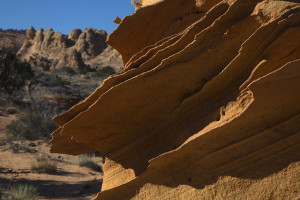Recently I attended the annual National Geographic Photography Seminar held at the Washington DC headquarters of NGS. It was great to see photographers and friends such as Nick Nichols, Steve McCurry, Jodi Cobb, George Steinmetz, et. al. Once a year is hardly enough to convene. As one National Geographic photographer said, “How come they always send me out there? What’s wrong with right here?” In short, we are gone a lot and fortunate that something like the seminar brings us together to commune in Photojournalism, where it is spelled with a capital “P”.
Several moving tributes to Robert E. Gilka, former Director of Photography who died in 2012 were given, both in on-screen form and by NGM executives. I always use a quote from a letter he wrote to a prospective photographer as a way to describe his view of the profession:
“What I miss most in your pictures is the input of the photographer. You see what most of us see and that is not enough. To rise above the great pack of people calling themselves photographers, one must develop seeing senses to the utmost. It is with a special kind of seeing ability that photographers make interesting, exciting or provocative images.…My words are not likely to be comforting; they’re not meant to be. Photography is a tough profession.”
On the program this year was Tyler Hicks a New York Times photojournalist. He is what we sometimes refer to as a “bullet chaser” – in essence a war photographer. In 2013, 70 journalists were killed – over half were videographers or photographers. We are no longer considered “neutral” in combat, now it depends on which side you align with as to the degree of danger. Tyler has worked in Syria, Libya, Afghanistan, Pakistan, Iraq, Bosnia, Lebanon, Israel, Gaza and Chechnya — usually countries where conflict is happening.
Tyler spoke and showed images of his work that in many cases was not done as an embedded (read controlled) journalist, but while operating on his wits, experience and, as he would agree, luck.
But none of his war images were as arresting as the images that he took at the Westgate Mall massacre in Nairobi, Kenya on September 21. 2013. I think that there are two reasons for this:
1. The mall is not a war zone, but a civilized shopping area that was overtaken by a group of terrorists who were very cavalier as they committed random carnage.
2. Tyler took several pictures from outside the complex, showing people fleeing the mall, wounded civilians, and bodies in cars where they had been gunned down in the parking lot. Tyler and his wife (also a journalist) then ENTERED the mall when the terrorists still controlled the area.
This left me thinking. If I were there would I, as a photojournalist, go into a place where I could plainly see by those fleeing that it was dangerous if not deadly? Obviously Tyler’s years as a war correspondent helped him understand some of the risks. As he said, when the good guys arrived, they did a store to store search, much like a house to house search in a war zone.
When in the field and in a dicey situation, we make decisions based on a recognition of risks, but sometimes we are wrong. An infamous National Geographic photographer was in Tiananmen Square, China during the repression of demonstrators on June 3 and 4, 1989. Not only did he not come back with pictures, but also he called the magazine and said he wanted the company to get him home as soon as possible to be back with his family.
So who are you, brave photojournalist? We would like to think that we are akin to Tyler, but until you are in the situation, you just don’t know. What I can say is that I am happy to be in a profession that has people like Tyler and Jim Nachtwey as members so that we can all see the unvarnished reality of life in their images.
An addendum to this post April 4, 2014: Heavy hearts as another photojournalist, Anja Niedringhaus, was murdered by an Afghan “policeman”. Many tributes to her on the web, but to see the power of her images, go to her site



